Introduction
This article provides information about jib cranes, including their uses and types.
You will learn about the following topics:
- What is a Jib Crane?
- Uses for Jib Cranes
- Types of Jib Cranes
- How Jib Cranes are Made
- And Much More...

Chapter One – What is a Jib Crane?
A jib crane is a type of lifting equipment featuring an arm or boom that extends from the main structure to increase reach. Its lattice framework reduces added weight on the load. These cranes are ideal for small workspaces and excel in repetitive lifting tasks. They offer exceptional flexibility, handling loads ranging from 250 lbs to 15 tons.
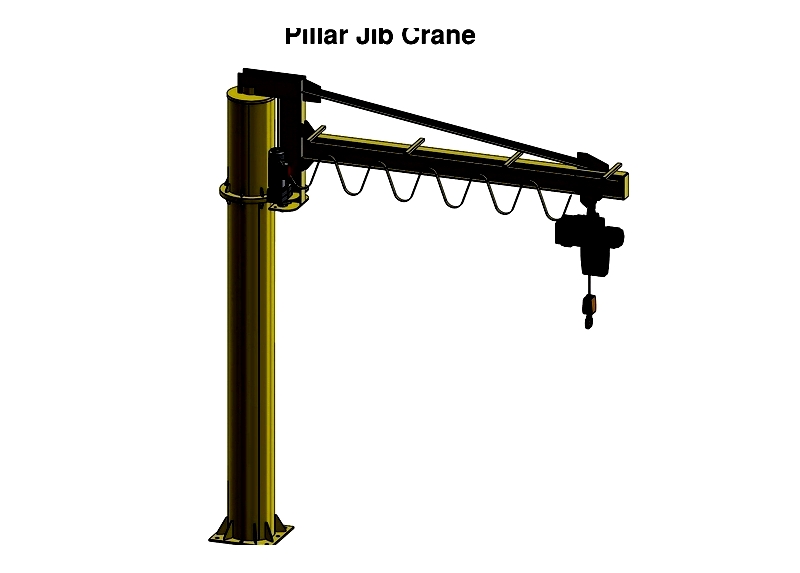
Jib cranes come in various configurations, each designed for specific lifting needs. Freestanding jib cranes are the most common, offering versatile installation options. This design serves as the basis for other types, such as wall-mounted, ceiling-mounted, and articulating jib cranes.
Chapter Two – What are the Different Types of Jib Cranes?
The simple yet robust design of jib cranes makes them suitable for industrial workspaces, manufacturing plants, shipping facilities, and warehouses. Their versatility allows customization for confined spaces, easing the challenges of lifting and moving heavy or awkward materials. Jib cranes are often used alongside other overhead lifting equipment like gantry cranes or bridge cranes to enhance efficiency and material flow.
Like other material handling cranes, jib cranes are mounted on a horizontal beam, ceiling, column, or wall. They are also called boom cranes in the industry. The defining feature is the jib or arm, which supports the lifting mechanism—typically an electric or manual hoist—enabling precise load movement within the crane's working radius.
Jib Crane Types
Freestanding Jib Crane
Freestanding jib cranes are the most versatile, suitable for both indoor and outdoor use. They can operate independently or with other cranes, lifting capacities from a few pounds to several tons. Many offer full 360° rotation, expanding their coverage and application range.
Key benefits include flexible placement, wide span, full rotation, high capacity, and supplemental lifting for production lines and shipping docks. They come in three mounting configurations: base plate, foundation, and sleeve insert. The best choice depends on load requirements, floor space, and building structure.
base Plate Mounted
A base plate mounted freestanding jib crane is secured to a reinforced concrete foundation with anchor bolts and gussets for stability. This design allows the boom to extend over obstacles and is easy to install for retrofit or new projects. It's ideal for facilities needing flexible hoist placement and relocation options.
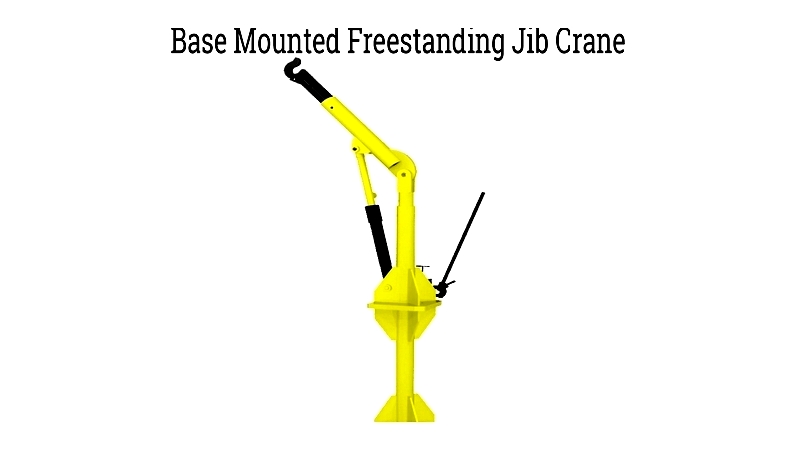
Foundation Mounted
A foundation mounted freestanding jib crane has a welded steel plate and mast embedded in concrete. This provides exceptional stability for heavy-duty lifting. Without gussets, it's optimized for higher capacities and demanding environments.

Sleeve Insert Mounted
A sleeve insert mounted freestanding jib crane features a steel sleeve set in concrete, allowing easy mast installation or replacement. A second concrete layer encases the sleeve, offering flexibility for facility reconfiguration.

Articulating Jib Cranes
Articulating jib cranes have a pivoting boom and articulating arm connected by a rotating knuckle. This design enhances maneuverability, enabling precise positioning in tight spaces. They can be wall, floor, or ceiling mounted, or integrated with bridge crane systems.
The dual-arm design offers superior control: the main arm swivels 200°, while the outer arm rotates 360°. This makes them ideal for assembly lines, workstations, and obstructed environments.

Wall Mounted Jib Cranes
Wall mounted jib cranes maximize space efficiency by requiring no floor space. Often used with monorail or bridge cranes, they are installed near the building's lowest structural member to maximize headroom.
These cranes can be swung against the wall when idle, minimizing interference. With spans from 8 to 30 feet and capacities up to five tons, they're ideal for fabrication shops and restricted spaces.
They come in two designs: cantilever and tie rod supported.
Cantilever
The cantilever wall-mounted jib crane has a rigid boom supported by two wall brackets. This design maximizes vertical clearance, making it suitable for lifting near ceilings or mezzanines.
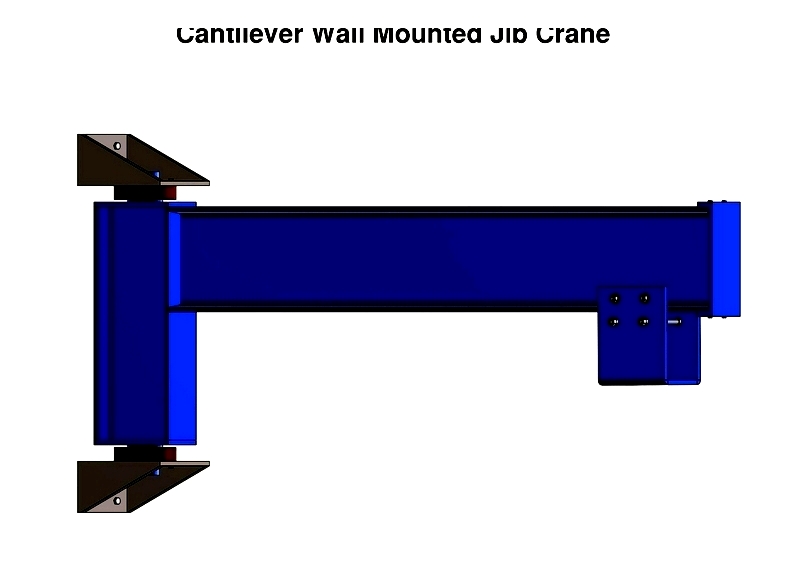
Tie Rod Supported
Tie rod jib cranes are cost-effective solutions for wall or column mounting. The lower bracket attaches to the boom, while the upper connects to the tie rod, distributing the load. They offer extended span and full boom traversal.
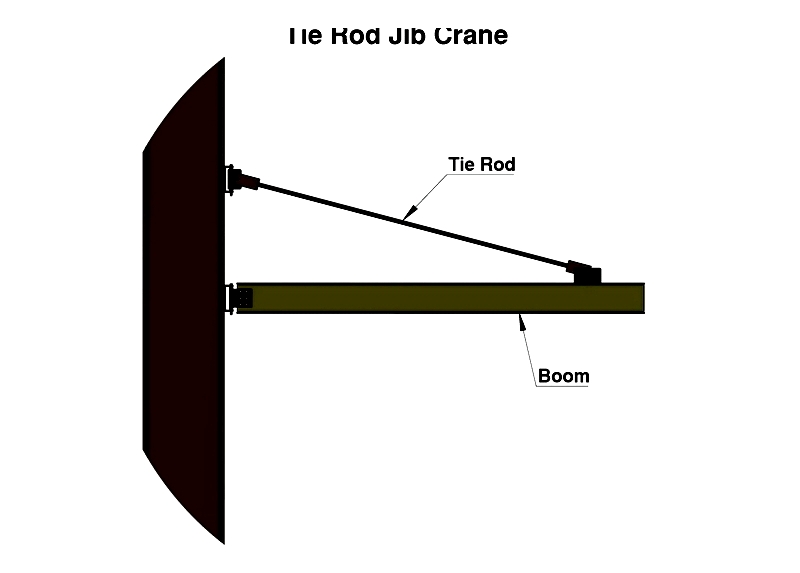
Mast Jib Cranes
Mast jib cranes are floor-supported and stabilized by building beams or trusses. They require minimal floor disruption, often needing no special foundation. This makes them cost-effective for heavy, frequent lifting.
Available in full cantilever or drop cantilever configurations, they offer spans from 10 to 40 feet and capacities up to ten tons. Their 360° rotation suits high-throughput material handling.
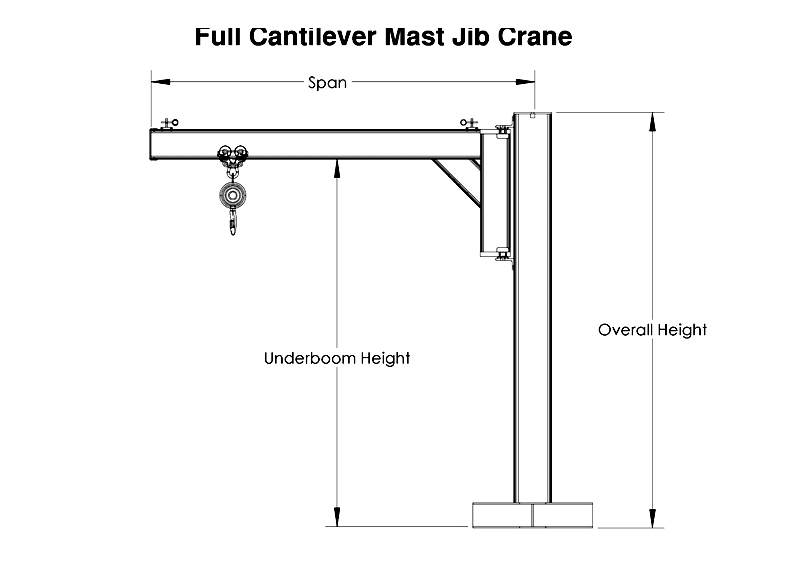
Portable Jib Cranes
Portable jib cranes provide mobility for on-demand lifting. Mounted on movable bases with caster wheels, they allow single-operator material transfer without permanent installation.
Typically rated for lighter loads (up to half a ton), they're ideal for maintenance shops and production tasks requiring frequent setup changes. Safety features like locking wheels ensure stability during operation.
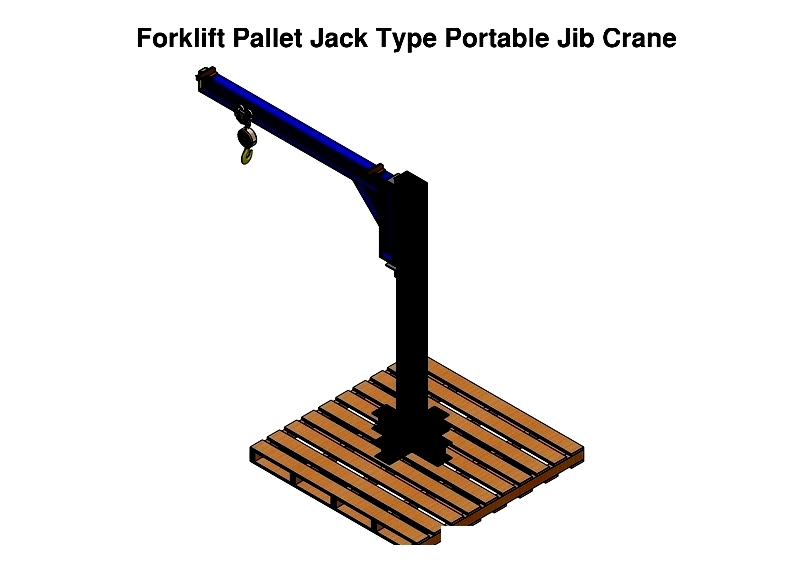
Hydraulic Jib Crane
A hydraulic jib crane uses a hydraulic cylinder for smooth boom movement. Powered by battery or hand pump, it offers precise load control. Ideal for automotive repair or small-scale manufacturing, it handles up to one ton retracted or 500 lbs extended.




